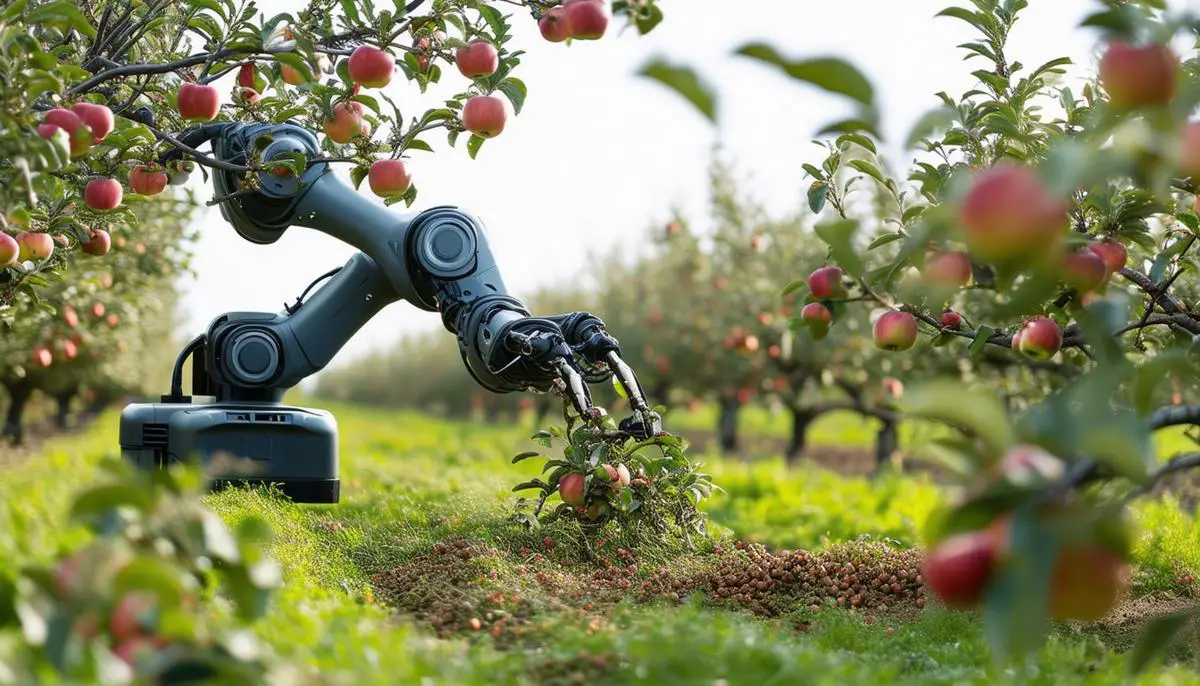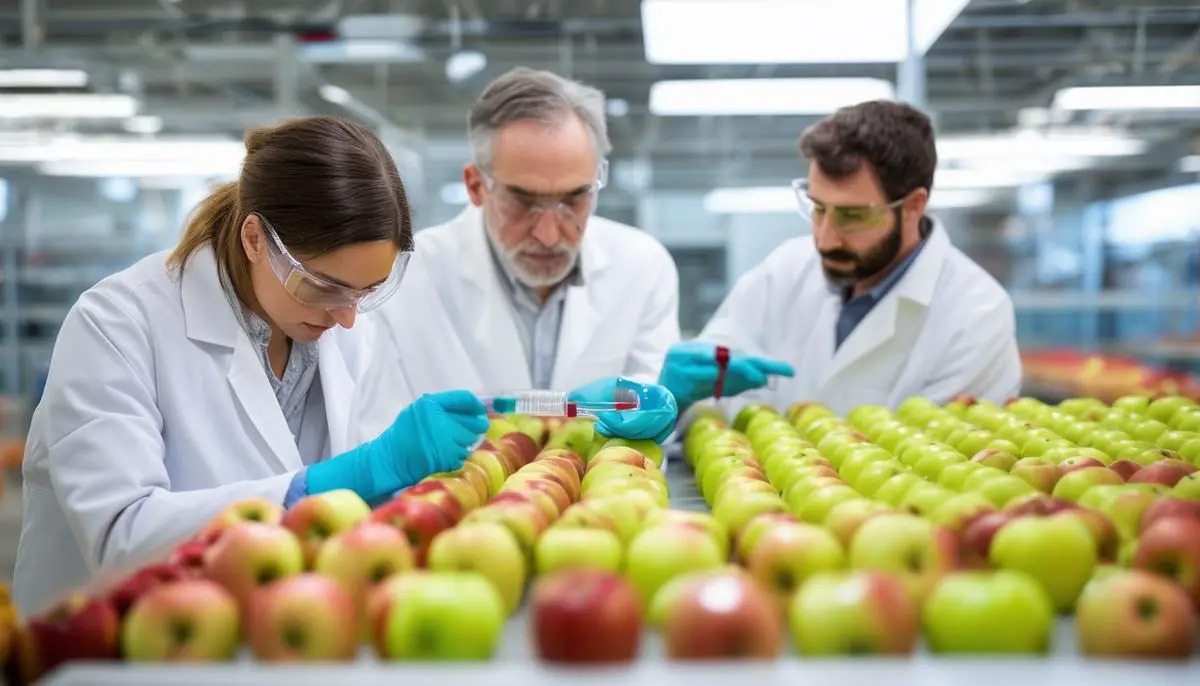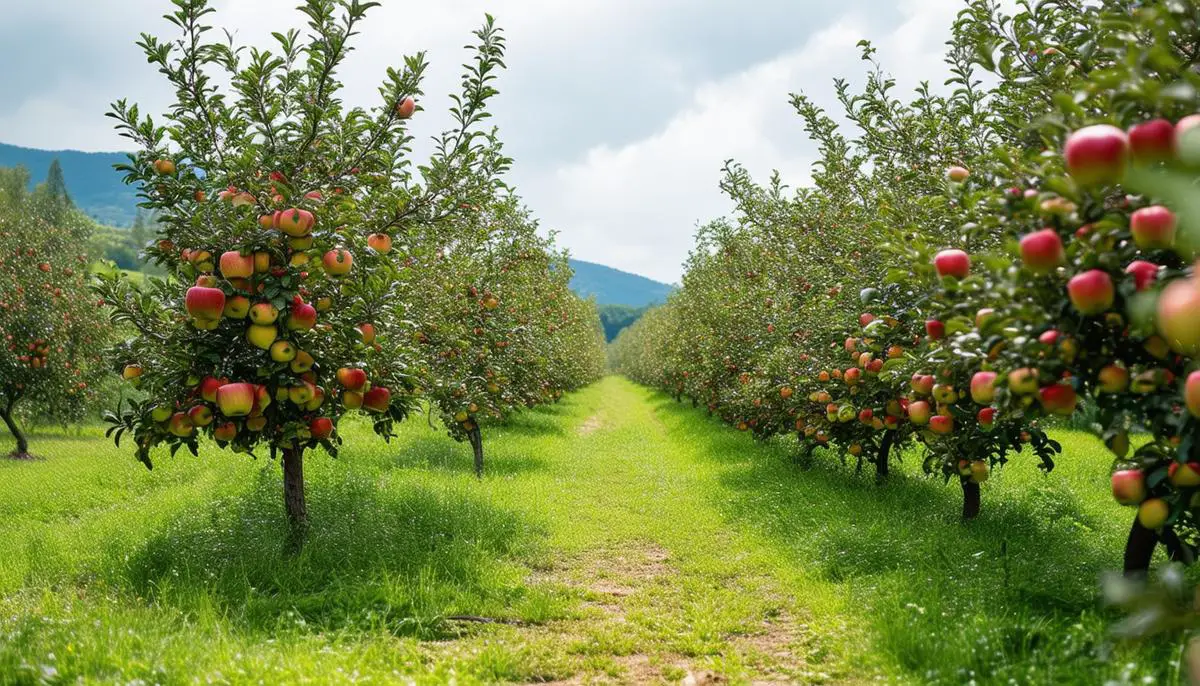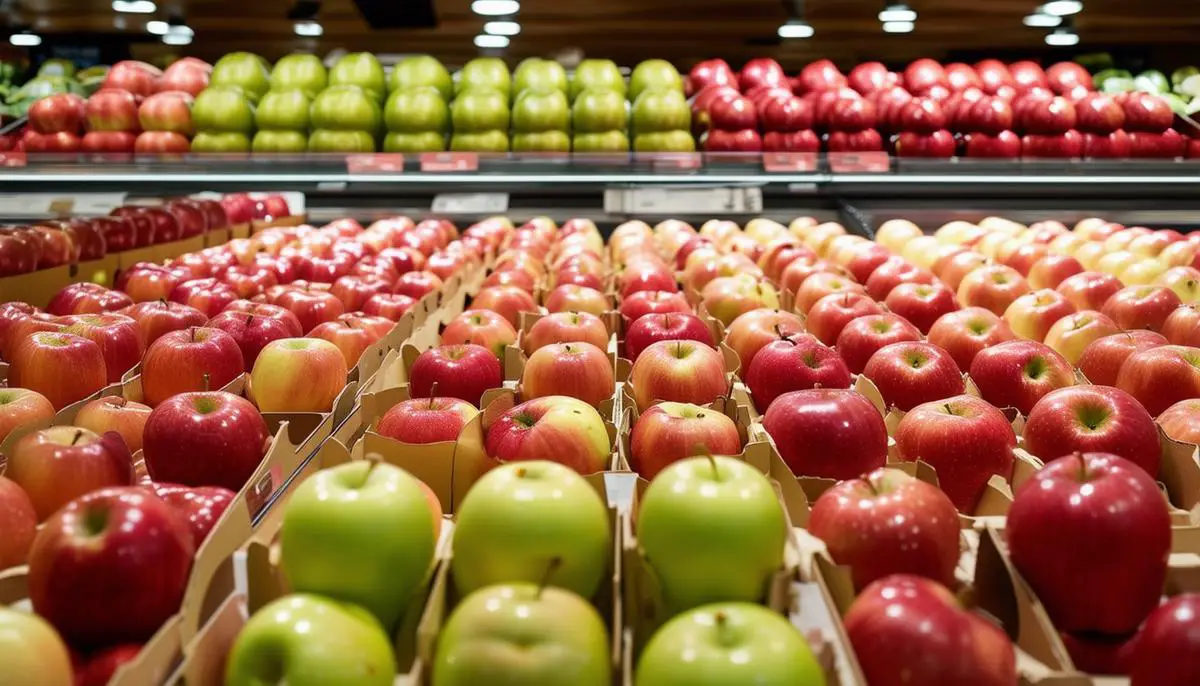Technological advancements and genetic improvements are revolutionizing apple farming, bringing unprecedented efficiency and quality to orchards. From automated pruning systems to sustainable practices, the industry is undergoing a transformation that promises better apples for everyone.
Technological Advancements
Automated pruning systems are now a reality in apple orchards. These systems boast advanced sensors and robotics that trim branches with precision. Picture an orchestra of machines, each snipping away while understanding the tree's unique geometry. These bots even avoid obstacles—a feature sorely missed by clumsy humans.
Pollination has also seen significant changes. With dwindling bee populations, some cutting-edge devices can imitate natural pollination, carefully applying artificial pollen at just the right time. Robotic bees don't need breaks and never complain about the weather.
Automated thinning devices selectively remove excess apples, ensuring what remains is juicy perfection. Think of it as nature's quality control team, only this team never slacks off.
Robots have rolled in to make bagging apples effortless. They cover each apple in protective bags faster than you can say "Granny Smith." The result? Spotless, sun-kissed apples without pesticide residue.
During harvest season, machines have taken charge. Harvesting robots equipped with vision systems and AI can identify ripe apples and pluck them gently off the tree. And these bots? They get it right, almost every time, without the elbow grease and backaches.
Infield sorting systems, powered by AI and robotics, now separate the best fruit before they even hit storage. This ensures apples reaching markets are top-notch, reducing waste and boosting profits.
In essence, the modern apple orchard is like a tech expo—a display of innovation transforming tradition. When tech meets tradition, magic happens.

Genetic Improvement
The University of Minnesota has been in the apple game for over a century, tirelessly working to produce apple varieties that aren't just passable but downright sensational. They evaluate about 25,000 apple trees at various stages, seeking varieties that are disease-resistant, bursting with flavor, and built to last longer on your pantry shelf.1
From the first cross-pollination using handpicked "parent" varieties, it's a journey that can take up to 30 years before a new apple hits the market. Some crosses are made for disease resistance, others for that crispy bite we all love. If it's not crunchy enough? Out it goes.
Take, for example, the renowned Honeycrisp. After years of careful breeding and testing, the Honeycrisp emerged, sporting a killer combination of juiciness, sweetness, and firmness.
Experts are also managing to breed apples that flourish even when the weather has more mood swings than a rom-com protagonist. Through genetic research, they're tackling pest resistance too, developing apples with built-in defenses that make life tough for critters while keeping the fruit chemical-free.
Thanks to the painstaking work of institutions like the University of Minnesota, we get to sink our teeth into apples that are not just healthy and delicious but also a triumph of science and dedication.

Sustainable Practices
Precision farming is transforming apple orchards with the accuracy of a Swiss watch. With GPS systems, remote sensors, and data analytics, farmers can pinpoint exactly how much water or fertilizer each section of the orchard needs. This means healthier trees and tastier apples, without wasting precious resources.
Integrated Pest Management (IPM) is like a carefully choreographed dance between different pest control strategies—biological, cultural, mechanical, and chemical—all working in harmony. Farmers use data to monitor pest levels and only use pesticides when absolutely necessary.
Agroforestry integrates trees and shrubs into the orchard ecosystem, creating a diverse, biodiverse haven. These trees provide shade, reduce soil erosion, and even help sequester carbon. They also offer habitats for beneficial insects and birds, turning the orchard into a veritable wildlife sanctuary.
- Precision farming ensures no resource is wasted
- IPM keeps the orchard eco-balanced
- Agroforestry makes everything greener and more robust
These sustainable practices aren't just about being environmentally friendly. They're about making apple farming resilient, adaptable, and prosperous in the long run.

Economic and Market Impact
The economic benefits of research and development in apple farming are significant. With the integration of advanced technology like automated systems, farmers are saving on labor costs. Imagine a scenario where a single robot can do the work of ten farmhands—swiftly and accurately. That's a lot of savings that can be invested back into the orchard or passed down the line.
Apples aren't just being produced more efficiently—they're also superior in quality, thanks to careful genetic research and sustainable farming practices. Fruits that are disease-resistant, flavorful, and durable mean happier consumers. And when consumers are happy, they come back for more.
This enhanced marketability ties in beautifully with branding. A solid brand image, built on the pillars of superior quality, sustainability, and genetic innovation, transforms these apples from humble fruits into coveted treasures. People are willing to pay a premium for an apple that promises all the goodness they desire.
Today's savvy consumers crave transparency, sustainability, and quality. Advanced R&D delivers precisely that. We're talking apps that trace your apple's journey from the orchard to your table, sustainable practices that appeal to eco-conscious buyers, and innovations that set new standards for taste and shelf life.
The role of branding in driving industry growth is significant. When an apple brand hits the right notes of quality, sustainability, and innovation, it doesn't just survive; it thrives and leads the market, setting benchmarks for others to follow.
In essence, the economic landscape in apple farming has transformed into a vibrant, efficient ecosystem thanks to relentless R&D efforts. This transformation translates into better profit margins for farmers, reduced wastage, and apples that command top dollar in the market, all while staying true to the roots of sustainability and quality.

The fusion of technology, genetics, and sustainable methods is setting new standards for quality and efficiency in apple farming. This evolution ensures that every bite of an apple is a testament to innovation and dedication.
- University of Minnesota. Apple Breeding Program. Minnesota Agricultural Experiment Station. 2021.